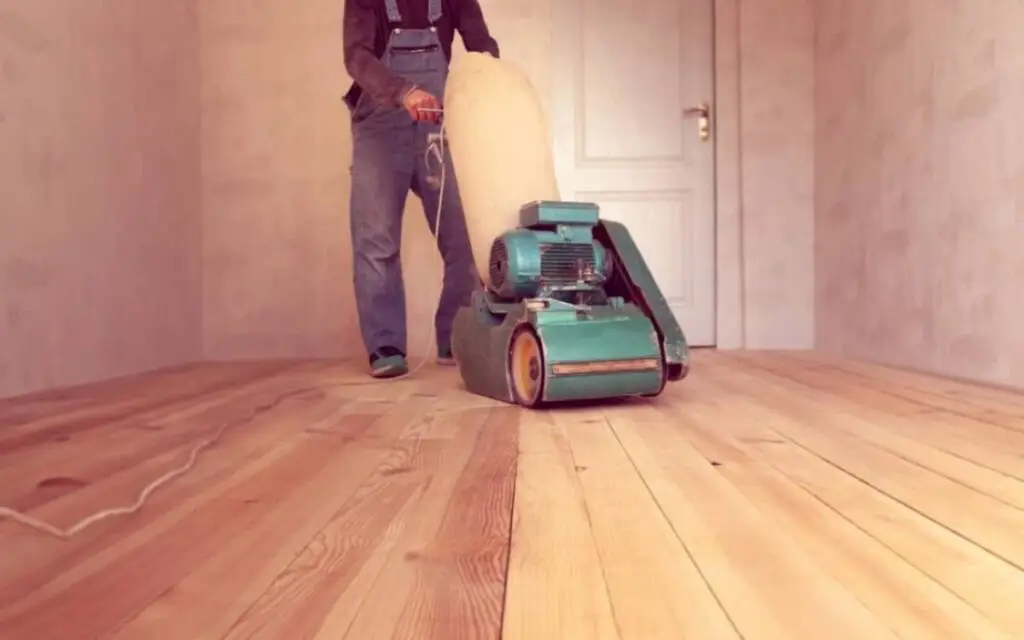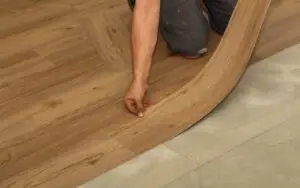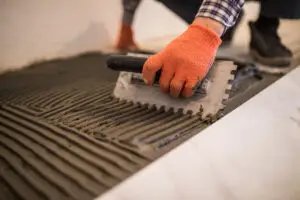Understanding the Basics of Floor Sanding
Why Multiple Passes Are Necessary
Floor sanding is a meticulous process that requires multiple passes to achieve a smooth and even finish. A single pass, regardless of the grit used, will not effectively remove all imperfections, scratches, and old finishes. Multiple passes with progressively finer grits are essential to gradually refine the surface of the wood, ensuring a flawless foundation for staining or finishing. Each pass plays a crucial role in eliminating imperfections and creating a smooth, even surface, which is a job best performed by experienced professionals.
The Importance of a Proper Sanding Technique
A proper sanding technique is just as crucial as the number of passes. Using the correct pressure, overlap, and speed is key for achieving an even and consistent result. Improper technique can result in uneven surfaces, swirl marks, and damage to the wood. Professional floor sanding services have the expertise to use the right techniques, ensuring a consistent and high-quality finish. Their knowledge and precision are what guarantee a professional outcome every time.
Factors Influencing the Number of Sanding Passes
Type of Wood Flooring
The type of wood flooring plays a significant role in determining the number of sanding passes required. Hardwoods like oak, maple, and hickory are denser and generally need fewer passes compared to softer woods like pine or fir. Different types of wood react differently to sanding, so a professional will use specific methods to avoid damaging the floor. Professional floor sanders have experience working with different types of wood, and will always adjust their techniques as needed to deliver a high-quality finish.
Hardwood vs. Softwood Considerations
Hardwoods are generally more durable and resistant to scratches and dents, and this means they will require fewer sanding passes. Softwoods, on the other hand, are more prone to damage and may need additional sanding passes to achieve a smooth surface. Understanding these differences is key to achieving optimal results. A professional floor sander understands the unique challenges presented by different types of wood, and they always adjust their techniques according to the wood type to ensure the best possible outcome.
Condition of the Existing Floor
The current condition of your floor also plays a key role in deciding the number of sanding passes. Heavily damaged floors with deep scratches, dents, or stains may require more aggressive initial sanding passes. Floors in relatively good condition will need fewer passes. Professionals will always assess the state of your floor and adjust their approach to ensure the right number of passes is used.
Addressing Scratches, Dents, and Stains
Addressing scratches, dents, and stains properly is an essential part of the sanding process. Deep scratches and stains may require more initial coarse sanding passes to remove, while light scratches and superficial marks may need less work. A professional will always use the right approach for each situation, resulting in a perfectly smooth surface without any imperfections.
Desired Finish and Level of Smoothness
The desired finish and level of smoothness can influence the number of sanding passes required. If you’re aiming for a very smooth, high-gloss finish, you’ll usually need more sanding passes with finer grits. For a more rustic, matte finish, fewer passes may suffice. The desired final result will dictate the number of passes, and a professional will always adjust their technique to meet your preferences.
Matte, Satin, and Gloss Finishes
Different finishes require varying levels of sanding precision. Matte finishes are less glossy and will hide imperfections more easily, requiring less sanding, while gloss finishes require very smooth surfaces and more sanding passes with finer grits to achieve a flawless result. The expertise of a professional installer will always ensure your floor is perfectly sanded for your chosen finish.
The Floor Sanding Process: Step-by-Step
Initial Coarse Sanding Pass
The initial coarse sanding pass is the first step to removing old finishes, deep scratches, and other imperfections. This pass uses a coarse grit sandpaper and it is key to evening out the surface of the floor. This step is crucial for creating a smooth foundation for the following steps and is a task that requires expertise and precision, best performed by professionals.
Using the Right Grit for First Pass
Choosing the right grit for the first pass is crucial to avoid damaging the wood. Using too coarse a grit might gouge the wood, while too fine a grit won’t effectively remove old finishes. Professional sanders will know what grit to use according to your floor’s current state. This will ensure that the process is done efficiently and without any mishaps.
Intermediate Sanding Passes
The intermediate sanding passes are used to remove the marks from the initial coarse sanding and further smooth out the surface. These passes involve progressively finer grits to refine the wood and prepare it for the fine sanding. Professional floor sanding services will use a logical progression of grits to ensure a uniform, smooth surface.
Importance of Grit Progression
Grit progression is important to avoid any damage to your wood. Using the right progression will gradually refine the surface, preventing scratches and ensuring a smooth finish. Skipping steps or using too big a jump between grits can result in uneven surfaces or visible sanding marks, which is why professionals are highly recommended for this work.
Fine Sanding Pass and Final Smoothing
The fine sanding pass is the last step in the sanding process. This step uses the finest grit sandpaper to smooth the surface even further, preparing it for the final stain or finish. This pass is done slowly, with precision and care, ensuring the floor is perfectly smooth before the next step. Professional services always use this approach to guarantee a flawless surface.
Achieving a Flawless Surface
Achieving a flawless surface requires a very precise approach to the fine sanding pass. It is essential to work slowly, with consistent pressure, to remove any remaining imperfections and leave a perfectly smooth surface. This final sanding process is crucial to getting a professional result, which is why professionals are always the best choice for floor sanding.
Equipment and Tools for Effective Sanding
Types of Floor Sanders (Drum, Orbital, Edge)
There are different types of floor sanders available, and each is designed for a specific purpose. Drum sanders are used for large areas, orbital sanders are used for smaller areas and fine sanding, and edge sanders are used for edges and corners. Each sander has its own unique requirements, and professional services are always equipped with the right tools to guarantee the best results.
Choosing the Right Sander for Your Project
Choosing the right sander for your project is key to achieving the best results. Using a drum sander on small, detailed areas can cause damage, while using an edge sander to cover large areas can be very time-consuming. Professional floor sanders always choose the best sander for each specific project, making sure the work is performed efficiently and without errors.
Sanding Belts and Discs
Sanding belts and discs are available in a wide range of grits for each different stage of the sanding process. Matching the right grit to the sanding stage is crucial for effective sanding. Using the wrong grit can damage the wood or make the process very inefficient. Professionals always have a wide variety of belts and discs in different grits to ensure each stage is performed perfectly.
Matching Grit to the Sanding Stage
Matching the grit of the sanding belts to each sanding stage is essential for a good result. Coarse grits are used for the first passes, while progressively finer grits are used for each following step, gradually smoothing the floor’s surface. Professional sanders are well versed in grit progression and know how to use the right type of sandpaper to reach a perfect result every time.
Safety Gear and Dust Collection
Sanding floors creates a lot of dust, which can be a health hazard if inhaled. It is therefore essential to wear safety gear, such as masks and goggles, and to use dust collection equipment. Professional floor sanders are equipped with the right safety gear and professional dust collection systems, which ensures a clean and safe work environment.
Ensuring a Safe and Clean Environment
Safety is always a priority when sanding floors, and professionals make it their goal to ensure a safe and clean work environment. They will always take the necessary safety measures to protect both themselves and the client’s home, making it an essential advantage to hiring a professional.
Professional Floor Sanding vs. DIY
Case Study 1: The Problems of DIY Sanding
A homeowner tried sanding his floors to save on costs. He started with a rented drum sander and quickly discovered he lacked the expertise to use it. He accidentally gouged the wood, and he also had a hard time keeping the sander moving evenly, resulting in an uneven finish. Ultimately, he ended up hiring a professional to fix his mistakes, paying even more than if he had hired them from the start.
Case Study 2: The Benefits of Professional Expertise
Another homeowner decided to hire a professional floor sanding company. The company came with all the right tools and expertise, and they quickly started the job, using a step-by-step approach to ensure a flawless final result. They completed the job quickly, efficiently, and within the estimated budget, proving the worth of their expertise and knowledge.
Risks of Inconsistent Sanding
Inconsistent sanding can result in uneven surfaces, swirl marks, and damage to the wood, which can ruin the entire project and make the result look very unprofessional. These mistakes are usually difficult to fix, making it important to always hire a professional to avoid these issues.
Cost-Effectiveness of Professional Services
While DIY sanding may seem cheaper upfront, it can lead to costly mistakes and repairs, making professional services a better option in the long run. They can do a flawless job, and the result will be a high-quality flooring you can enjoy for years to come.
Post-Sanding Steps and Finishing Touches
Thorough Dust Removal
After sanding, it is essential to remove all the dust before applying any stains or finishes. Any remaining dust can ruin the final result, making it important to clean very thoroughly. Professional services have high-power vacuum cleaners and other specific cleaning equipment, guaranteeing all dust is removed for a perfect finish.
Applying Stain or Finish
After sanding and cleaning, applying a stain or finish is the next step. This step requires precision, as the result will be visible. Professionals know how to apply the stain or finish evenly, and they have access to professional quality products that will ensure a long-lasting and beautiful result.
Multiple Coats for Protection and Durability
Applying multiple coats of finish provides better protection and durability for the floor, extending its lifespan. Professional sanders understand the need for multiple coats, and they know the correct time to apply each one for a perfect result.
Maintenance and Care of Sanded Floors
Proper maintenance and care of sanded floors will extend their lifespan and maintain their beauty. Professionals can also provide advice on how to best care for your newly sanded floors, ensuring you will enjoy them for years to come.
FAQs & Answers
No, achieving a truly smooth and even floor requires multiple passes of sanding, each with a progressively finer grit. A single pass with a coarse grit won't eliminate all imperfections and could potentially damage the wood. Multiple passes with varying grits ensure the floor is evenly sanded, removing all scratches and imperfections, and creating a perfect surface for staining or finishing. Professional floor sanding services understand this multi-step approach, guaranteeing a smooth and flawless result that is not usually achievable with DIY methods, as they use specific equipment and techniques.
Skipping sanding steps or using the wrong grit can lead to several issues with the final result. Using too coarse a grit can cause deep scratches, while using a grit that is too fine too early won't properly remove existing imperfections. Moreover, inconsistent sanding can result in uneven surfaces and visible sanding marks. Professional floor sanding services use the correct grit progression technique to ensure a smooth and even result, eliminating common DIY mistakes and ensuring the longevity and beauty of your floor.
The cost of professional floor sanding varies depending on several factors, such as the size of the area, type of wood, and the floor's current condition. While it might seem more expensive than doing it yourself, it provides significant long-term value and prevents potential issues from DIY attempts. Professionals also provide all the right tools, techniques, and know-how, offering a more complete service that includes not just sanding, but also cleaning, finishing, and maintenance advice. Investing in professional sanding ensures a high-quality result, preventing costly repairs or replacements.
Yes, floor sanding is indeed a very dusty process, but professional services have advanced dust-collection equipment and techniques that minimize dust and keep your home as clean as possible. These specialized tools and methods ensure that dust is contained, preventing it from spreading around the house. Moreover, professionals are trained in dust management and take the necessary safety precautions to ensure a safe and healthy work environment. This level of care can make all the difference in your comfort and overall health.
While DIY floor sanding might seem appealing for saving costs, it requires specific equipment, knowledge, and technique to do it correctly, or it can end up doing more damage to your floors. Professional floor sanding services have years of experience, advanced equipment, and the knowledge to achieve the best possible results. They understand the subtleties of the process, which can save time and money, while delivering a higher quality finish. Also, they provide warranties and guarantees, which gives you an added peace of mind about their work.





